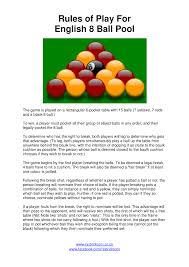
Snooker pool balls are made from a variety of different materials. They are available in a variety colors and generally smaller than standard pool balls. These balls also have lighter tips and smaller cues. Similar rules and table size allow you to use the same cue. These are some considerations if you own a table and wish to play snooker.
Snooker pool balls are available in many colors
There are many options for colors in snooker ball balls. While some are neutral and complement each other, others are more striking. For example, the colors of blue and yellow pool balls complement each other. You can also get other pool balls to make your table unique. A set of ultraviolet or granite pool balls will add elegance to your table.
Pool balls are usually solid red. However, snooker uses a wide range of colors. These can come in different colors such as blue, yellow, green and brown. The cueball itself is white. There are also striped balls.
Materials used to make snooker pool balls
Snooker pool balls are made of a variety of materials. They were originally made of wood as it was cheap and easy to find everywhere. The material was not durable and easily changed in shape. There were other materials available that could replace wood. Ivory was used to make the ball in the nineteenth century. The ivory balls cost a lot and could only four times be used per elephant.

Over the centuries, the materials used in making snooker pools balls have evolved. Wood was an easy material to work, and it was why it was first used. As time passed, Europeans began to experiment with other materials. Pool balls were first made from elephant tusks in the seventeenth century.
Size of a pool table for snooker
Snooker tables are more spacious than pool tables and offer more accessories and features. Players must be able to control the ball and the playing surface must be smooth. The playing surface is made of a cloth, which can be made of either wool or nylon. These materials are more expensive than others, but can last for years. Consider the size and materials of the table when choosing the right one for you.
There are three sizes to snooker tables. WPA tables have wide, angular pockets. WEPF tables have smaller pockets. The opening of the pocket on a WPA table is between two and three times wider than the diameter of a standard snooker ball. The WEPF table uses balls two to two+1/4 inches (51–54 mm), while WPA standard tables use smaller balls.
Rules of snooker pool
There are many rules in snooker. The goal is to score as many points as possible against your opponent. You can accomplish this by fouling or potting a ball. To determine who wins the game, flip a coin. Each player sets their cueball wherever the D shapes allow. The goal is for the redball, which is usually the highest scoring ball in a game, to reach the pocket.
Foul play is when the cue ball touches any ball that cannot be placed on. If the cueball hits another ball, the other player must move away from it. This is true even if another player has nominated a ball.

Availability of snooker pool balls
Snooker uses snooker pools balls. Each snooker table set includes twenty-two snooker balls. This includes a rack of fifteen red and six white balls. Numbering the balls gives an indication of their points value. There are two types of snooker balls available: the Aramith and English styles.
Snooker pool ball are available in many materials. Because wood was relatively cheap to produce, the earliest ball designs were made from it. Europeans started to prefer exotic materials and began using ivory. Ivory became the preferred material to make pool balls by the 17th Century. However, eventually, the elephant's tusks were endangered and manufacturers began to look for alternatives.